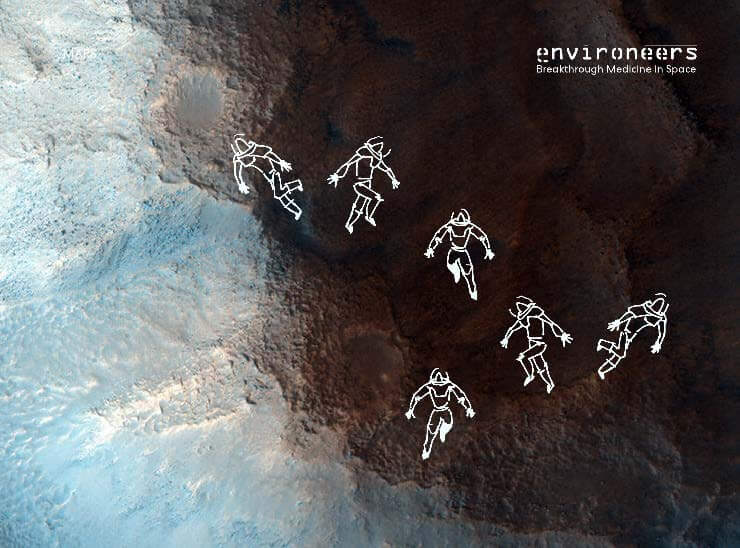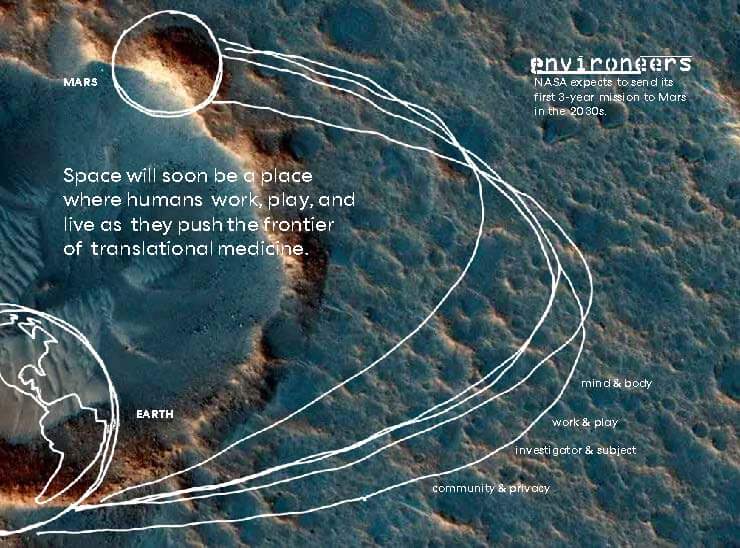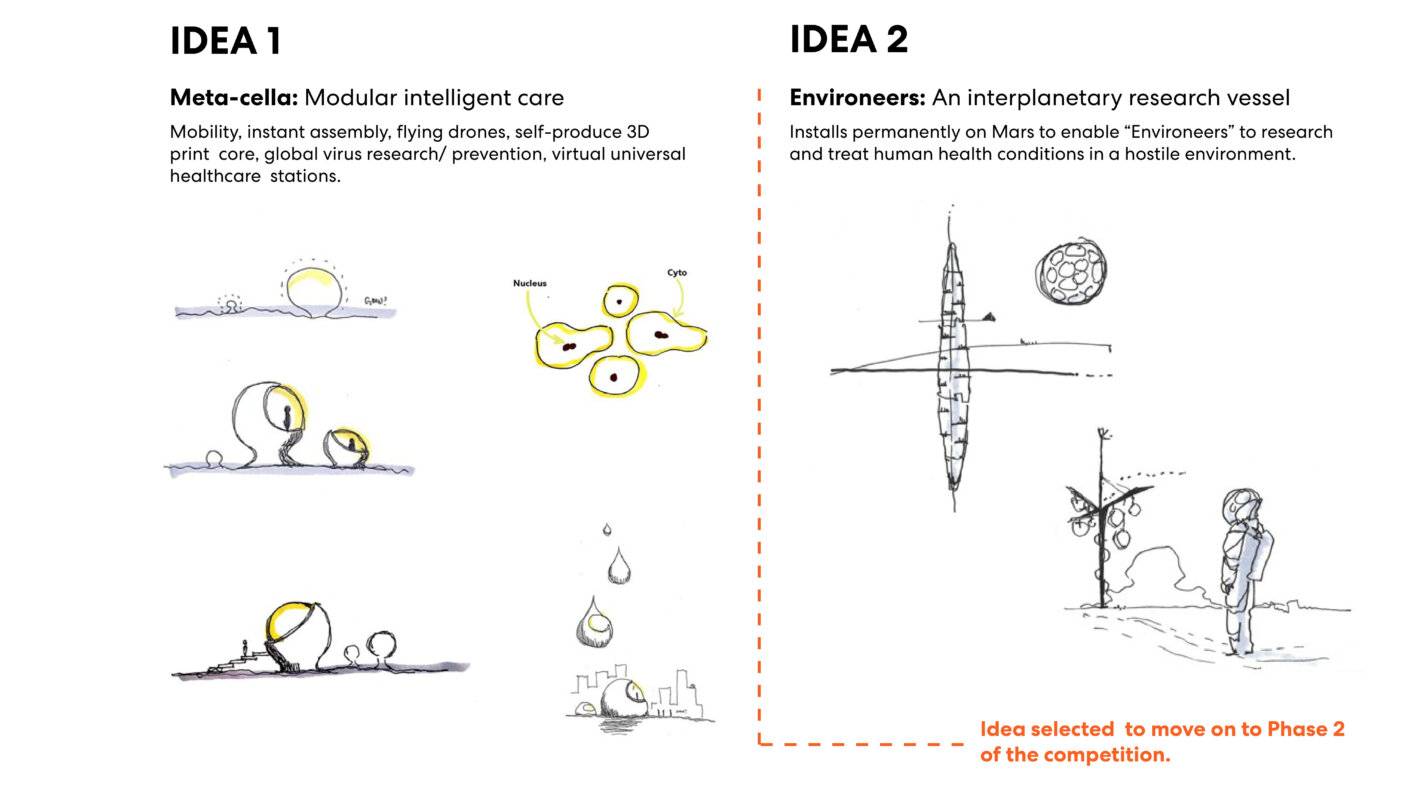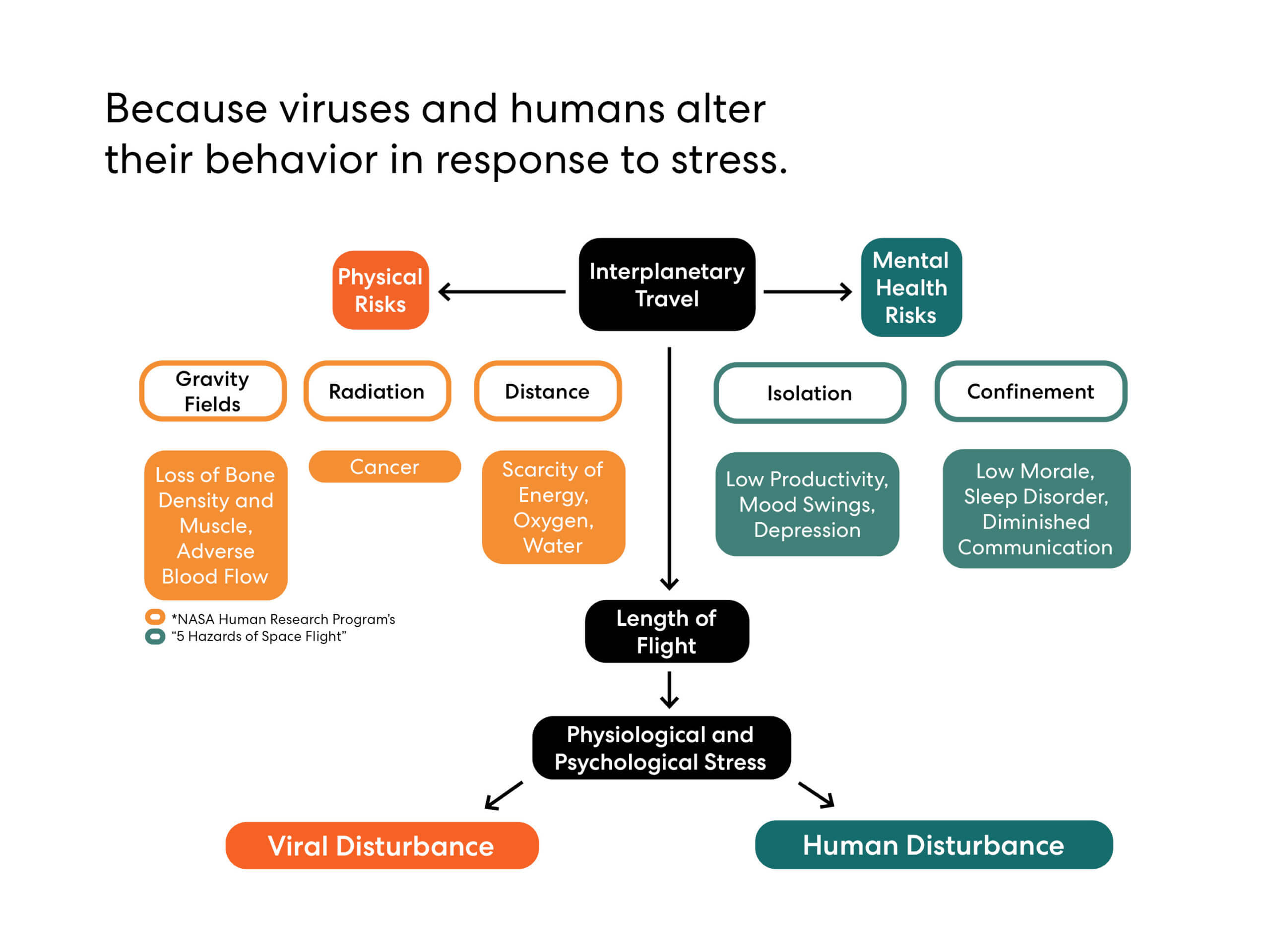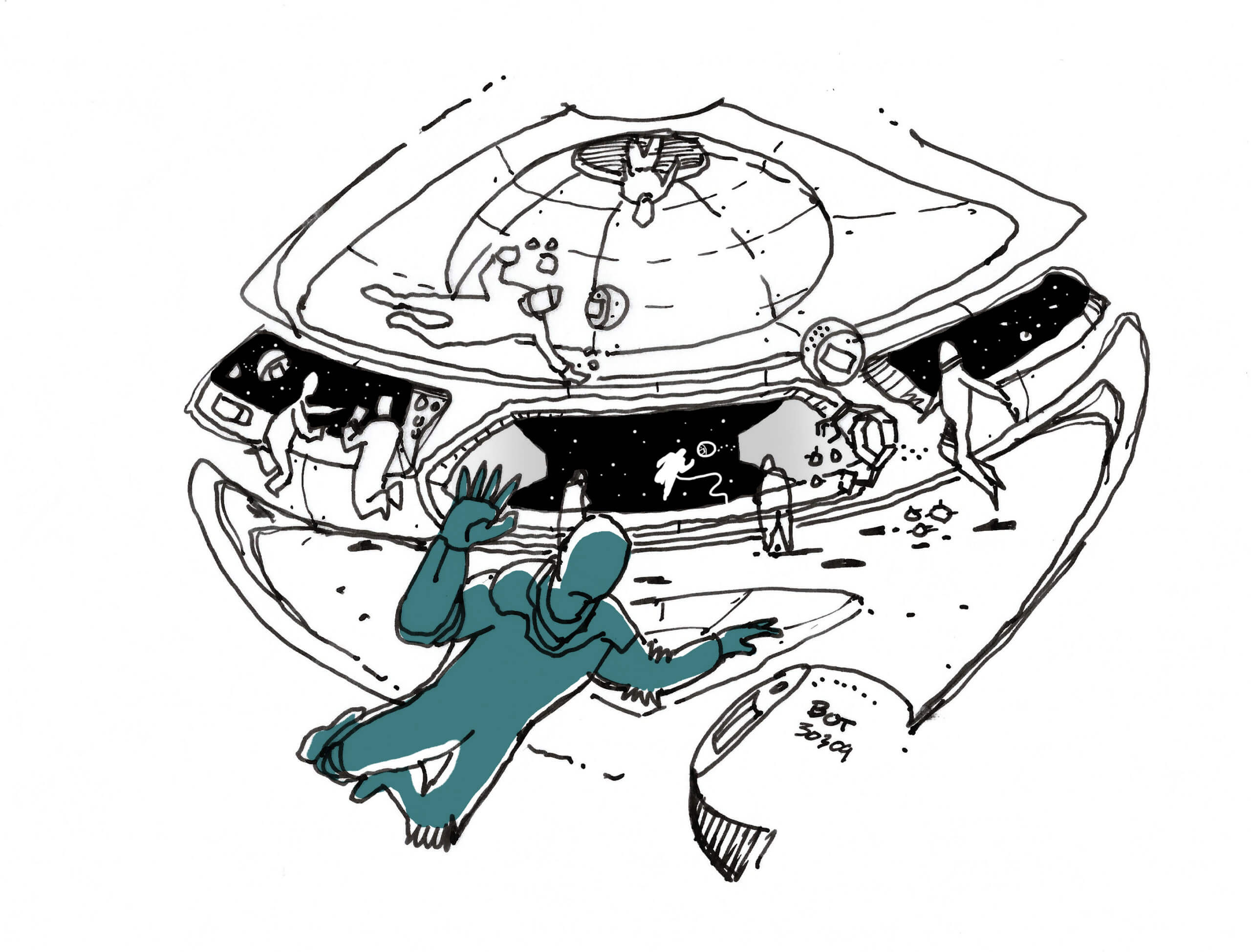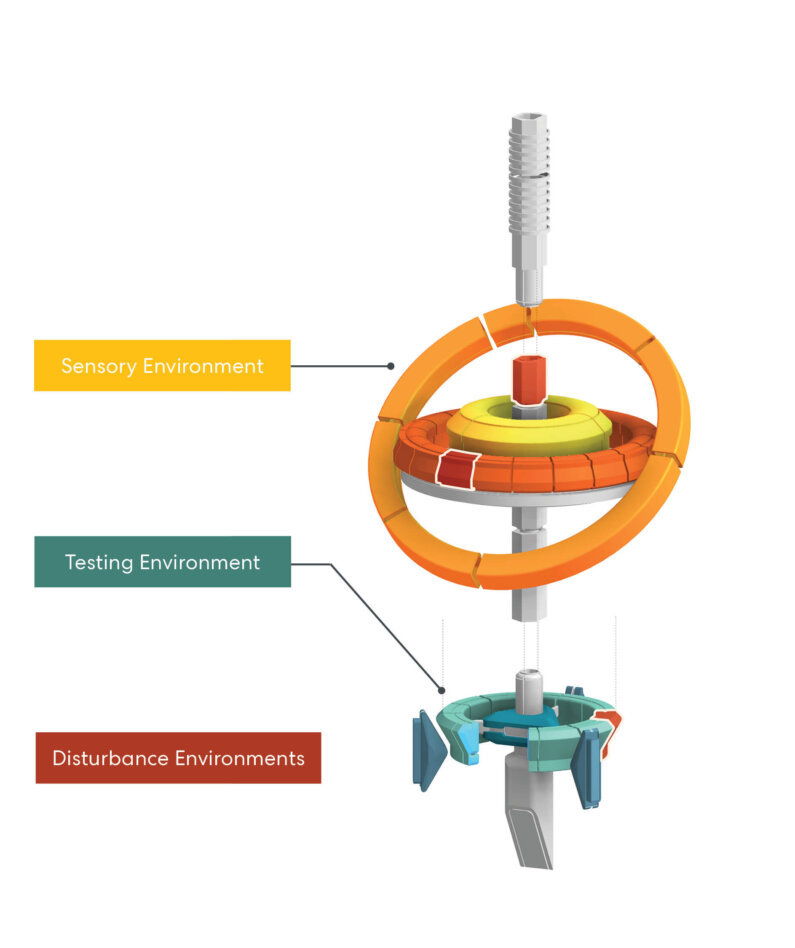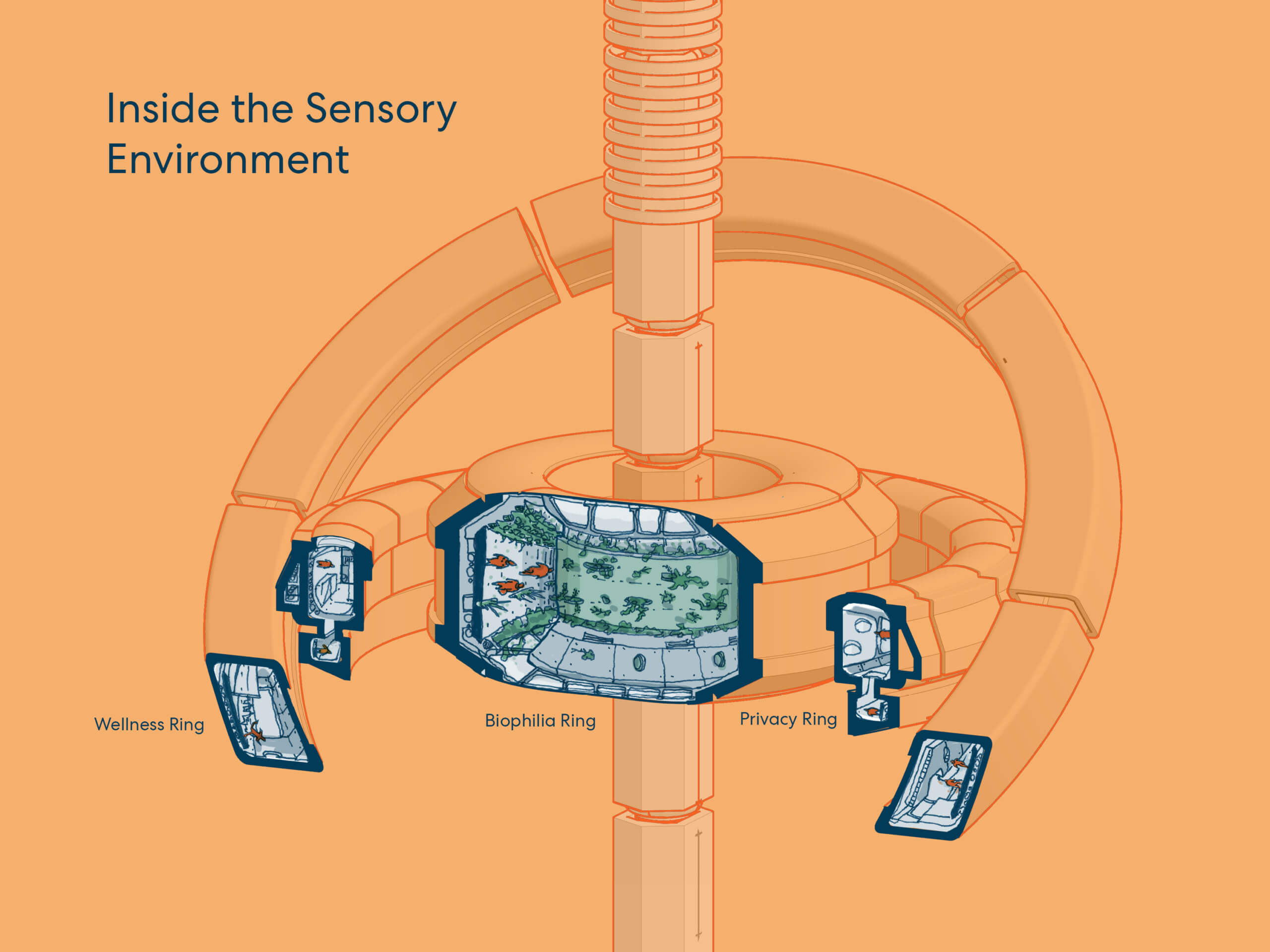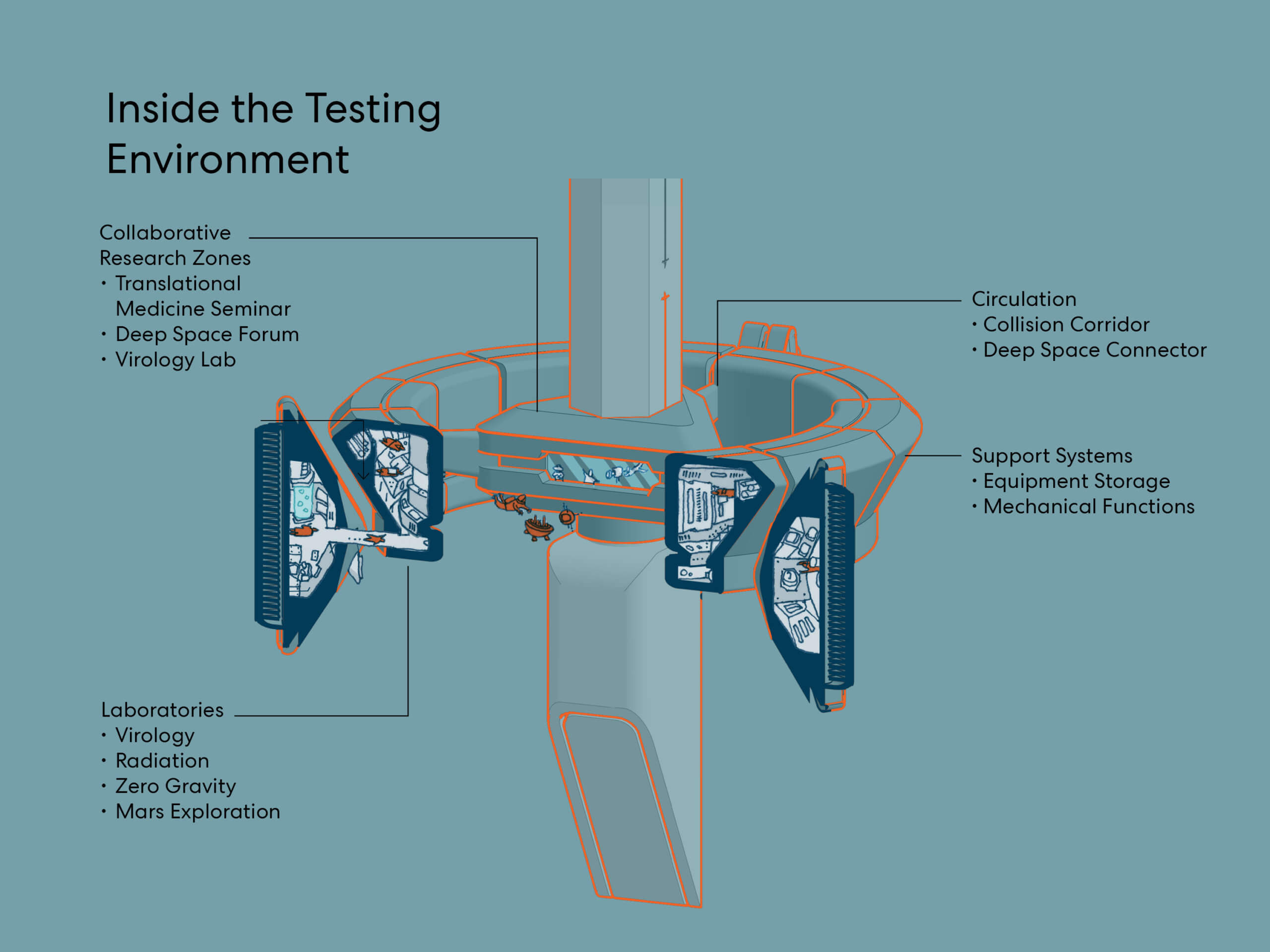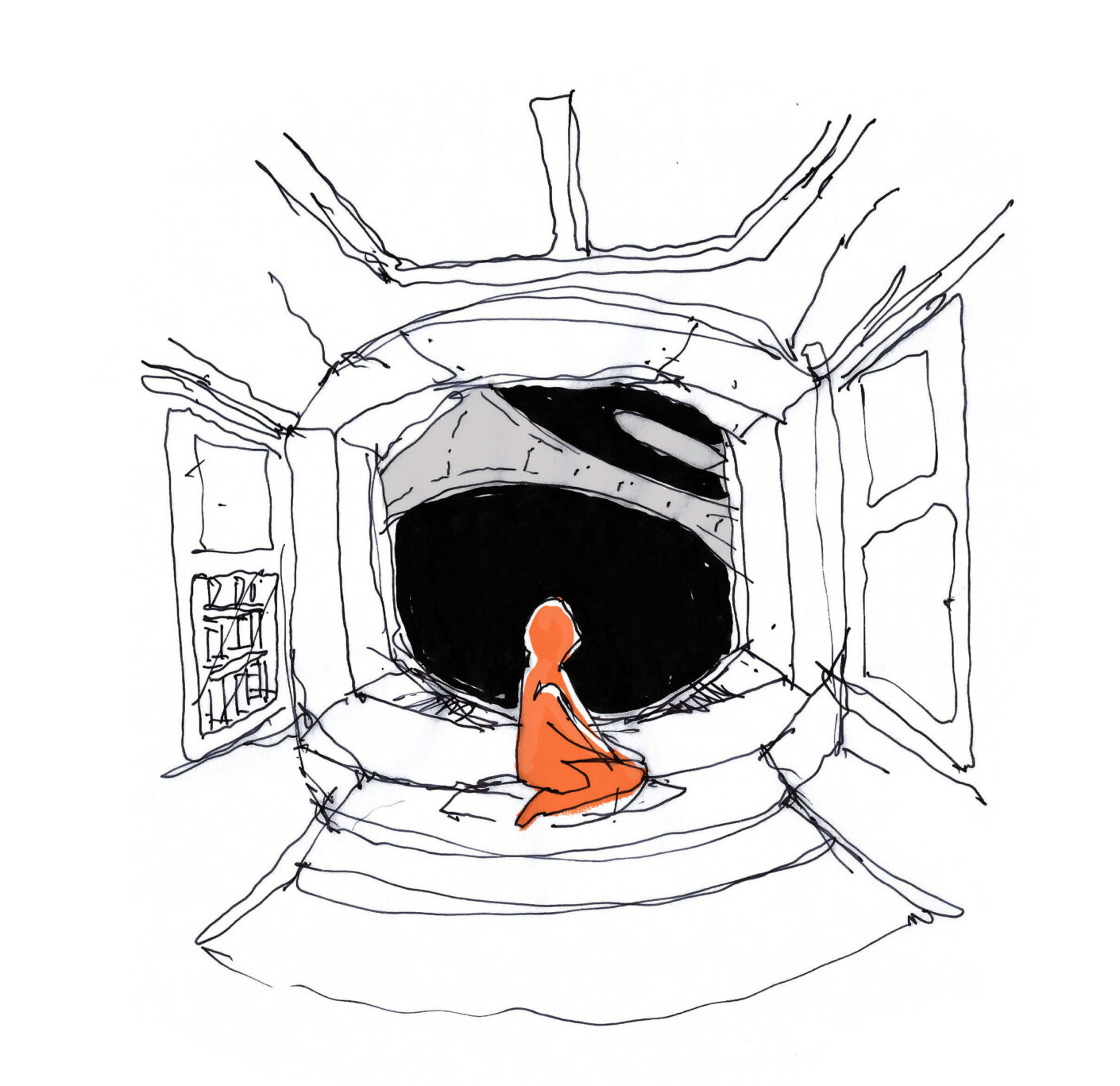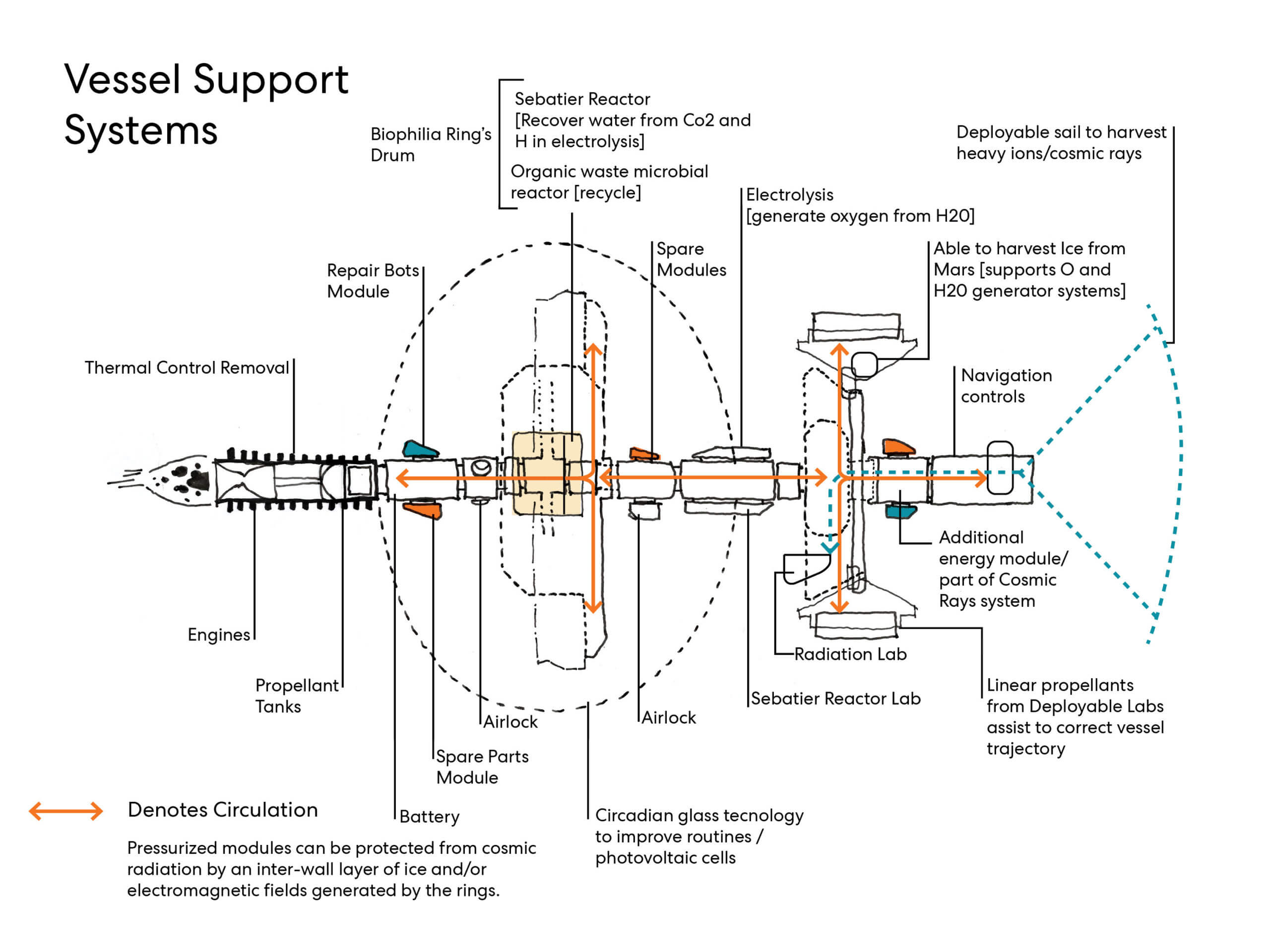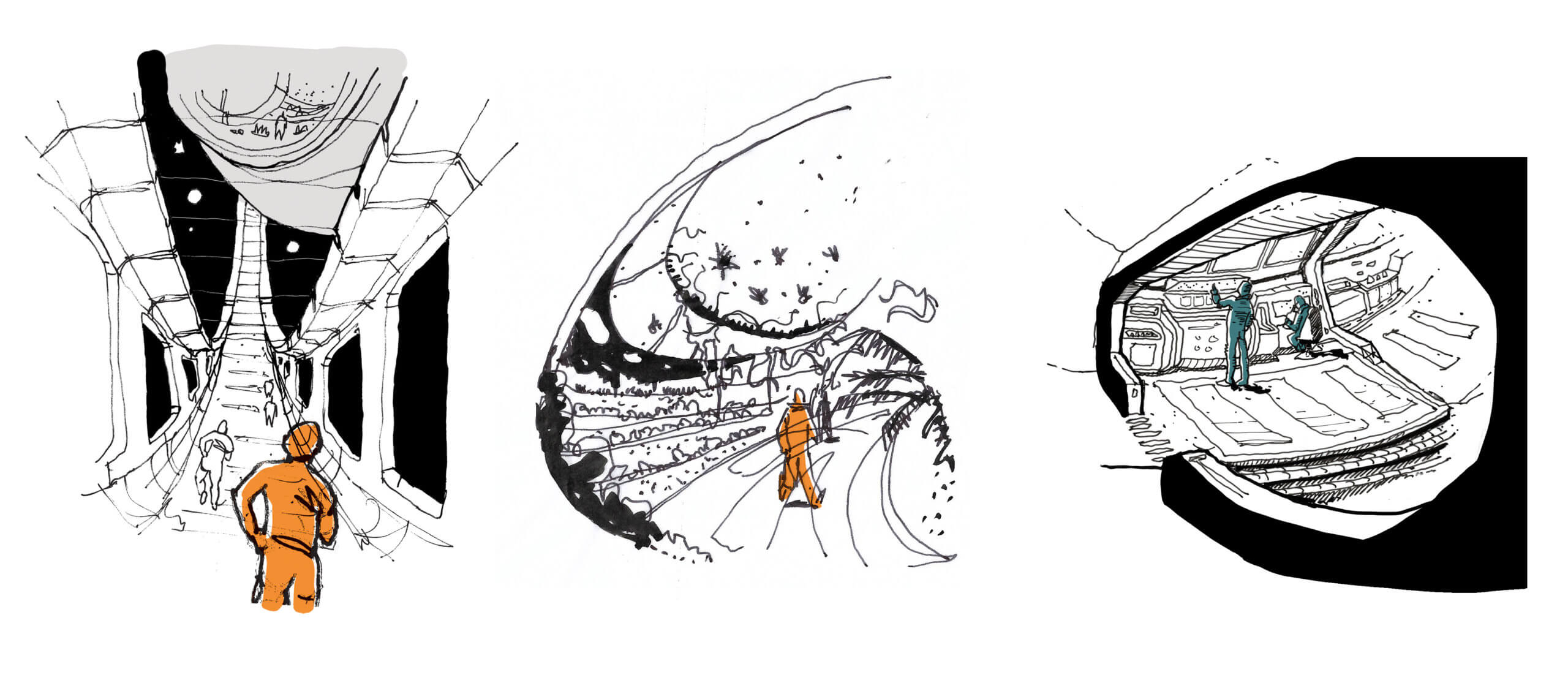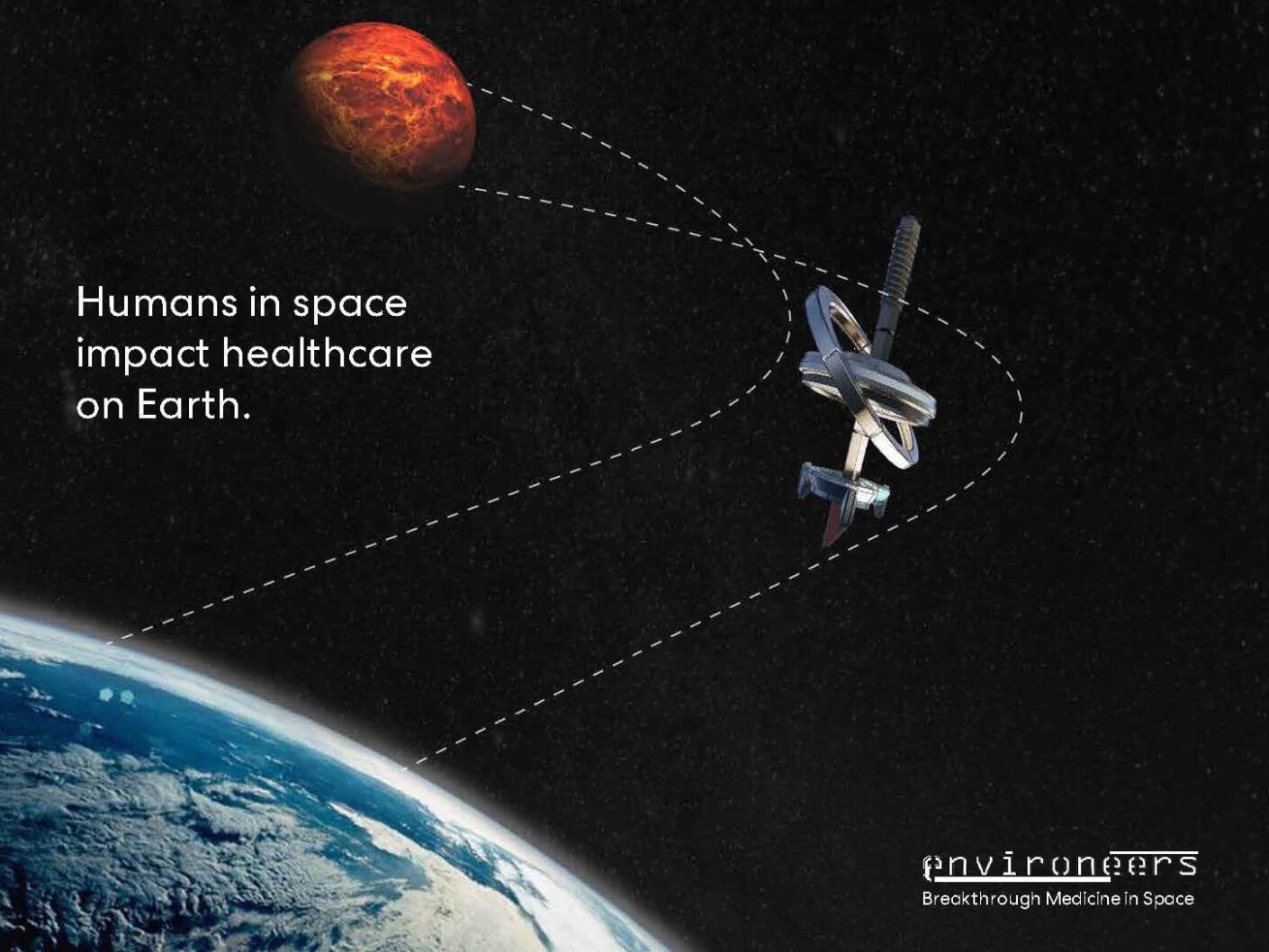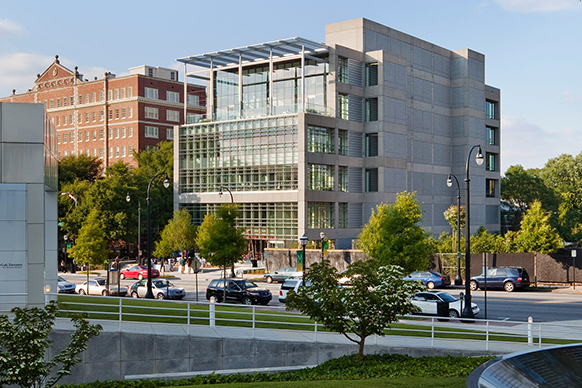There are three phases in the competition. We wanted to make sure we made it to Phase 2, so we submitted two entries for Phase 1: Meta-Cella was Julia’s brainchild, a modular intelligent care system that fuses bioink technology, intelligence engineering, and international cooperation to deliver targeted healthcare anywhere in the world. Innovative, imaginative, and ambitious, if we do say so ourselves.
You haven’t seen the last of Meta-Cella, but the idea that made it through to the Phase 2 semifinal round was Environeers, a living laboratory and environment where a group of astronauts, scientists, doctors, and educators form an investigative community to study viral and human behavior under stress. We imagined Environeers as a company, not unlike SEArch+, and our competition entry, Vooster Lab, would be the first vessel in the fleet.
